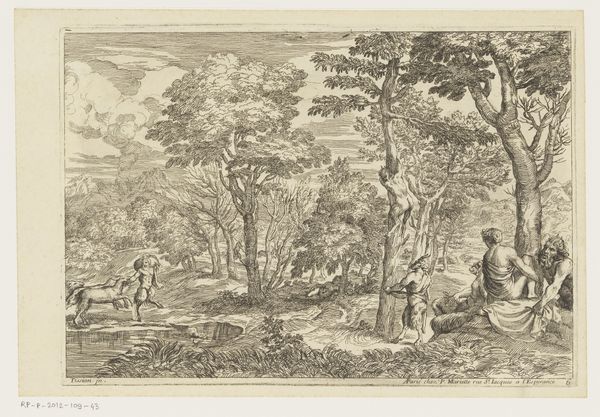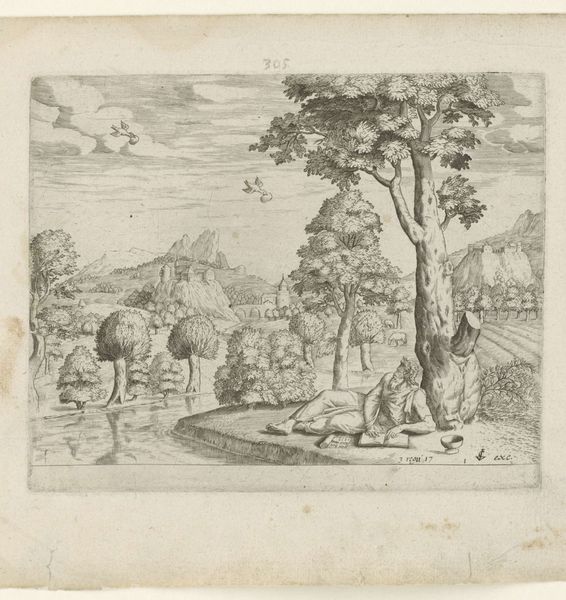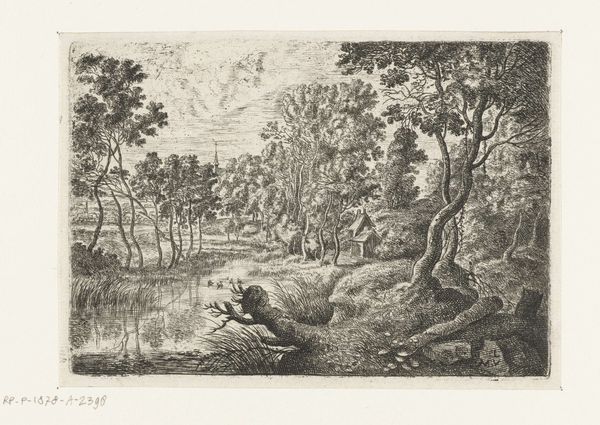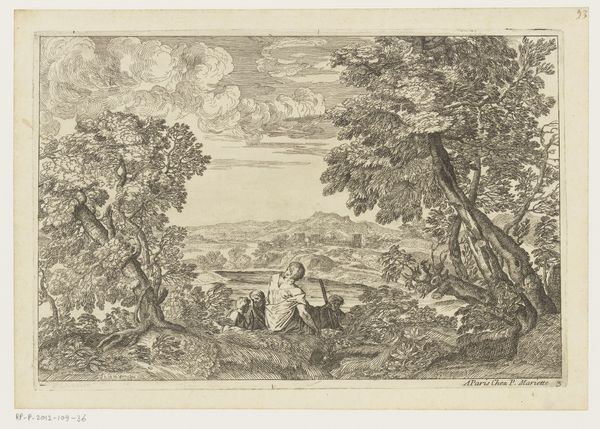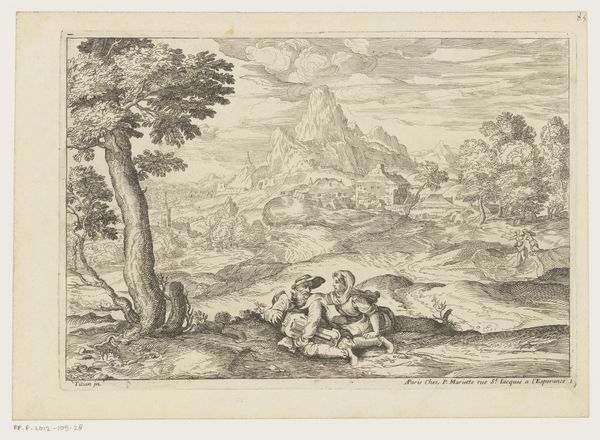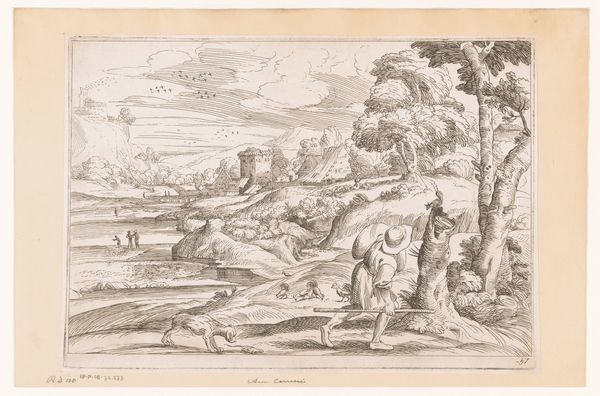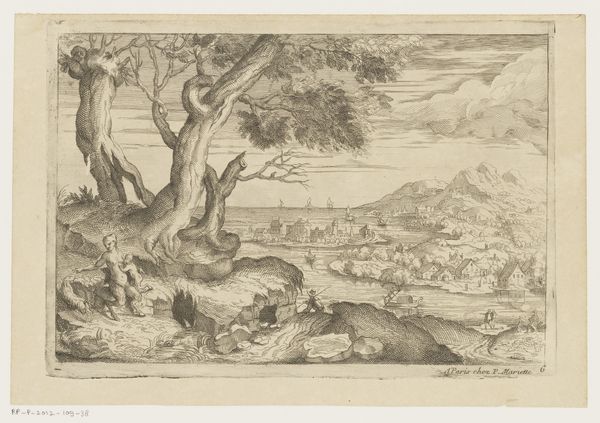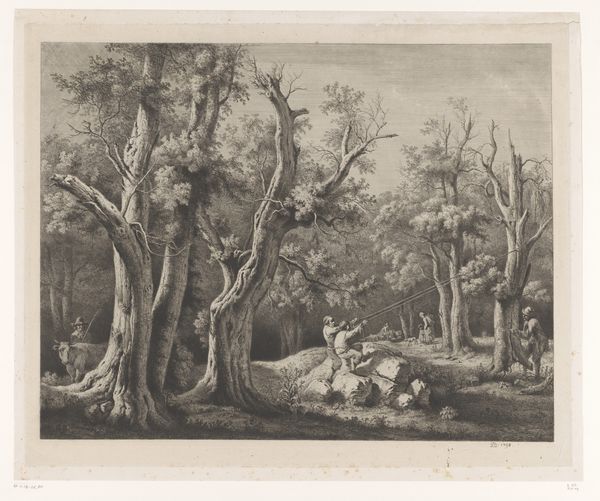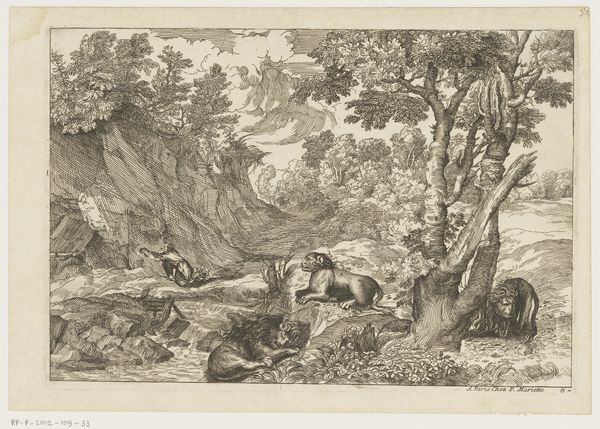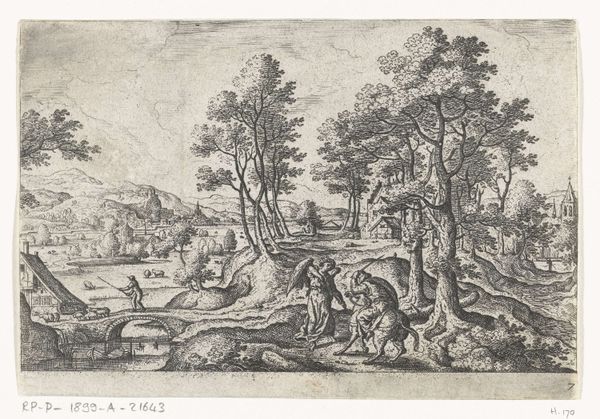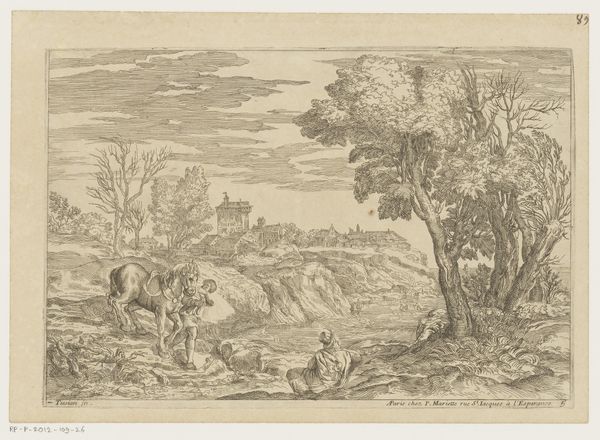
etching, engraving
#
baroque
#
etching
#
old engraving style
#
landscape
#
figuration
#
pen work
#
history-painting
#
engraving
Dimensions: height 283 mm, width 401 mm
Copyright: Rijks Museum: Open Domain
Jean Pesne created this landscape with satyrs and nymphs print some time between 1623 and 1700. This piece offers a glimpse into the 17th century's fascination with classical mythology and its integration into pastoral settings. Here, we see mythical creatures populating an idealized landscape, a common theme reflecting the era's longing for a harmonious relationship with nature, but it's worth asking, harmonious for whom? The satyrs and nymphs are sensual figures, and they are placed in the setting as though they belong there. This naturalizes a male gaze which is a cultural construction, and the lack of consent given by the nymphs to the satyrs promotes the problematic gender politics of the time. This artwork, while seemingly innocent, encapsulates complex social attitudes towards gender, class, and the natural world. As you consider this piece, reflect on how idealized landscapes can mask underlying power dynamics and shape our perceptions of beauty, desire, and belonging.
Comments
No comments
Be the first to comment and join the conversation on the ultimate creative platform.
